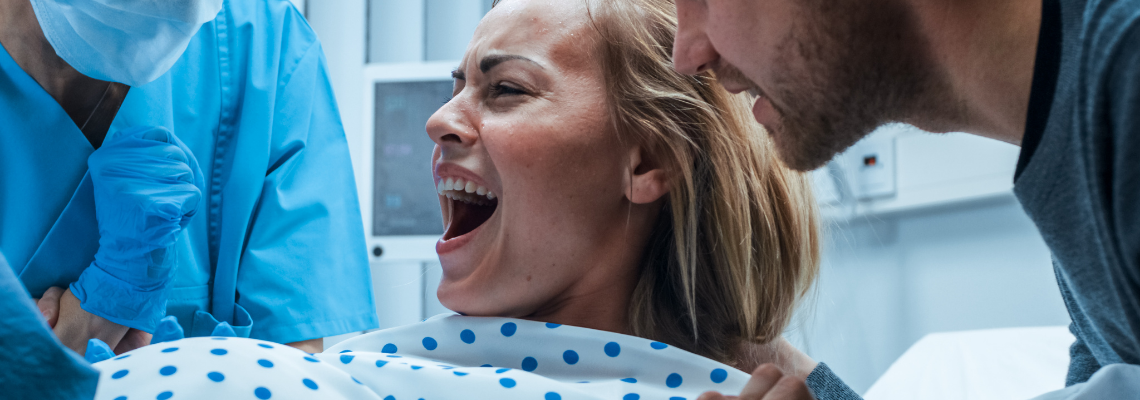
Late in pregnancy, you begin to experience labor pains. This occurs even before you are truly in labor. It’s important to know about both labor and delivery.
As you already know, a normal, healthy pregnancy lasts nine months. Labor and delivery can take as little as a few hours or last even days. As an expectant mom, it’s only natural to have feelings of apprehension about your upcoming labor and childbirth. Each woman is different, but there are certain characteristics of labor that all women experience.
What are the Signs of Labor?
You can know when you have officially entered labor if you experience certain symptoms. The following are common signs:
- Increased uterine pressure
- Lower levels of energy
- Discharge of bloody mucus
When you are in actual labor, you begin to experience contractions of the uterus that steadily grow more regular and painful. It’s important to understand that there are different types of labor, but generally when you experience the above symptoms, it means you are in real labor that leads to delivery.
 What Are Braxton-Hicks Contractions?
What Are Braxton-Hicks Contractions?
You may think about labor and delivery when you first experience Braxton-Hicks contractions. While these can feel scary, it’s helpful to know that they are completely normal. Braxton-Hicks contractions can begin as early in your pregnancy as after the 20th week. In most cases, they are uncomfortable but should not cause you any pain. They typically also come at irregular intervals.
Generally speaking, Braxton-Hicks contractions commonly occur as a result of added activity either by the mother or baby. Sometimes, they are triggered by a full bladder. No matter what the cause, the role that Braxton-Hicks contractions play in pregnancy is unknown. It’s believed, however, that they can serve some positive purposes such as promoting blood flow, ensuring good uterine health and even preparing the uterus for eventual delivery.
One key difference between Braxton-Hicks contractions and those that occur during labor is that the former don’t cause dilation of the cervix. While they don’t cause pain, many moms call their doctors in alarm when they first experience Braxton-Hicks contractions.
What Happens During Labor and Delivery?
Labor and delivery occur in three distinct stages. You should know what to expect once you begin labor. The following are the three stages:
- First Stage: The first stage of labor begins with early labor, which is the longest but least intense. Your cervix begins to thin and dilate three to four centimeters, and this process can last a few hours, days, or even weeks. Contractions can begin in varying intervals and can be either mild or strong. You can experience cramping, backaches and bloody mucus discharge as well. You then move into active labor, which causes the cervix to dilate to seven centimeters and contractions to grow stronger. Transitional labor replaces that and includes intense contractions that occur every two to three minutes and last for 60 to 90 seconds while the cervix continues dilating three additional centimeters.
- Second Stage: The cervix is fully dilated at 10 centimeters, and you may feel the urge to push. However, it can take time for the baby to move closer to the birth canal. Women are urged to relax while they continue experiencing contractions. The baby is delivered during this stage.
- Third stage: During the third stage of labor, the placenta is delivered. If an episiotomy (surgical cut below the vagina) was performed, the stitching of the cut is done in this stage as well.
 Positions to Help Labor
Positions to Help Labor
Lying down while you’re in labor can be the most painful position. While you are at the birthing center or hospital, there are other positions you can assume to ease the pain. These can also help you progress your labor as well. The positions include the following:
- Sitting: Sitting backward on a chair or sitting on an exercise ball can help you stretch your pelvic opening. Your knees should be around four inches lower than your hips. If you’re using an exercise ball, make sure you’re using the right size for your height: if you’re shorter than 64 inches, you should use a 55-centimeter ball; if you’re between 64 and 70 inches tall, you should use a 65-centimeter ball; if you’re taller than 70 inches, you should use a 75-centimeter ball.
- All Fours: Kneeling on all fours can ease back pain and help the baby get into position for delivery.
- Kneeling: General kneeling can also ease back pain.
- Lying on Left Side: Lying down on your left side can provide your baby with more oxygen and can be beneficial for your blood pressure if it’s high.
- Standing: Standing up allows gravity to help the baby move into the birthing position. You may not be able to actively walk, but you can be supported by your partner or a wall.
Understanding labor and delivery will prepare you for giving birth. You will be ready to ease your way through it all as you welcome your baby into the world.


